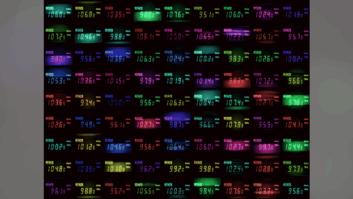The number of licensed FM commercial stations in the United States hit a historical peak 15 months ago and has been declining slightly since.
That’s one of the findings of an analysis by Radio World of the latest station count data from the Federal Communications Commission.
We also found that the number of AM stations is at its lowest in decades while the number of NCE FMs has hit a record high, as has the number of FM translators/boosters.
The tally of commercial FMs had been rising steadily over several decades. In 1990 (when FCC public data reporting became more consistent) there were about 4,350 commercial FM stations in the country. Ten years later and four years after the 1996 Telecom Act, there were close to 6,000 commercial FMs; and by the end of 2019 that number stood at 6,772.
But each of the five quarterly reports from the FCC since then has shown a slight ebbing; and at the end of March the number of commercial FM stations was 6,682, or 90 fewer than 15 months ago.
Whether we can read any general decline in demand for commercial FM stations into these numbers is problematic. It’s a drop of only 1.3% since the peak, though it is notable that the trend line had been virtually all upwards over many years prior. And the FCC doesn’t provide analysis of its data. Any shift could be driven by a slowing economy and of course the year-long pandemic. It’s a number we’ll keep an eye on.
Meanwhile the trend in AM station totals is more familiar and it continues in the latest quarter, when the FCC said there were 4,546 AM stations.
According to Radio World’s analysis, the country’s AM station count is the lowest it has been since at least 1990 and very likely longer than that. In 1990 there were just under 5,000 AM stations, and the total around that period tended not to vary much year to year.
But we can say that there are now about 9% fewer AM stations than there were in 1990.
On the other hand, the number of FM educational stations today is at its historic high of 4,213, up about 3% over five years and double the number at the turn of the century.
And the number of FM translators and boosters has also hit yet another record. There are now 8,521 of those, up 30% from just five years ago and more than four-fold from 1990, when there were only about 1,850 translators and boosters.
Demand for translators has been helped by multiple factors including HD Radio multicast plays, AM revitalization and general demand for FM spectrum.
And the number of low-power FM stations is now 2,114. That number has varied within a narrow range for the past decade.







